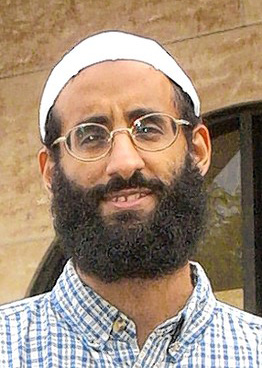Anwar al-Awlaki (Anwar al-Awlaki)

Al-Qaeda Regional Commander. He was born to a Yemeni family who was living in the United States, and by his birth there, gained dual US-Yemen citizenship. His father, Nasser al-Aulaqi, was a Fulbright Scholar who earned a master’s degree in agricultural economics at the New Mexico State University in 1971, later earned a doctorate degree at the University of Nebraska, and then worked for the University of Minnesota until 1978, when his family returned to Yemen. Anwar lived in Yemen for the next 11 years, and studied at the Azal Modern School, returning to Colorado in 1991 to attend college, and earned a BS Degree in Civil Engineering at the Colorado State University in 1994. While studying there, he spent one summer training with the Afghan mujahideen, who had fought the Soviet Union’s occupation of Afghanistan during the 1980s. After graduating from Colorado State University in 1994, he attended San Diego State University, where he earned a Master of Arts Degree in Education Leadership, and then attended George Washington University where he worked on a Doctorate degree in Human Resource Development for one semester, leaving GWU in December 2001. Over the years, he became an Islamic fundamentalist in his beliefs, and apparently took a strong interest in Jihadi doctrine during his summer in Afghanistan. Upon his return to Colorado to continue his studies, his friends noted that he had become strongly interested in middle-east politics and terrorism, often speaking at local mosques in San Diego and Washington DC. Two of the 9-11 hijackers had several meetings with him in San Diego prior in 1993-94, leading FBI investigators to believe he had prior knowledge of the 9-11 attacks, but lacking information, were unable to arrest him for any crimes. In January 2001, Anwar settled in Washington DC, where he became the Imam at a mosque in Falls Church, Virginia, and the Muslim Chaplain at George Washington University. Fluent in English, he spoke eloquently on Islam, attracting many non-Arabic speaking young men, including two of the 9-11 hijackers (Nawaf Al-Hazmi and Hani Hanjour), as well as Major Nidal Hasan (the Fort Hood shooter). The congressional report on the 9-11 attacks believed that Anwar was the spiritual advisor to the attackers, keeping them focused on the Jihadi aspects of the planned attack. But before the FBI could gather enough evidence, Anwar left for Britain in 2002. For the next two years, he gave talks to British Muslims, at the London Masjid al-Tawhid mosque, which a former student of his stated “he was the main man who translated the jihad into English.” After the British authorities took notice of Anwar’s activities there, al-Awlaki returned to Yemen in early 2004, with his wife and five children, where he taught at Iman University. Among its students was the American Taliban, John Walker Lindh, for which the school is generally believed to provide mostly radical Islamic studies. In August 2006, Yemeni authorities arrested him, and after he repented his radical ideals, they released him after 18 months in prison. But during the next couple of years, he aided radical jihadists by providing information and temporary quarters for them, but refrained from actively speaking. But in 2009, Yemeni authorities began investigating him again for terrorist activities, and he disappeared into the Yemeni population. In 2009 the government of Yemen added him to their “most-wanted” list, and President Barack Obama signed a “kill or capture” Executive Order. From this point on, Al-Awlaki began actively broadcasting radio lectures (from audio tapes while in hiding) encouraging jihad and other extreme acts against those who al-Qaeda believed had earned death. He has been linked to such activities as the Time Square Bomber (May 2010), the attempted murder of British minister Stephen Timms, the fatwa calling for the deaths of cartoonists who drew cartoons of Mohammed, the Fort Hood killings, and a number of bomb plots against American, British and European targets. He was considered one of the most dangerous of al-Qaeda’s members, and was promoted to “Regional Commander” by al-Qaeda in 2009. On September 30, 2011, in northern al-Jawf province, the US fired Hellfire missiles from two Predator drone aircraft at a vehicle containing four suspected al-Qaeda members, killing the men. Killed with al-Awlaki was Samir Khan, an American born in Saudi Arabia, who was a senior editor for Al Qaeda’s English language magazine, “Inspire.” (bio by: Kit and Morgan Benson) Family links: Children: Abdul-Rahman Al-Awlaki (____ – 2011)* *Calculated relationship
Born
- April, 22, 1971
- USA
Died
- September, 09, 2011
- Yemen

